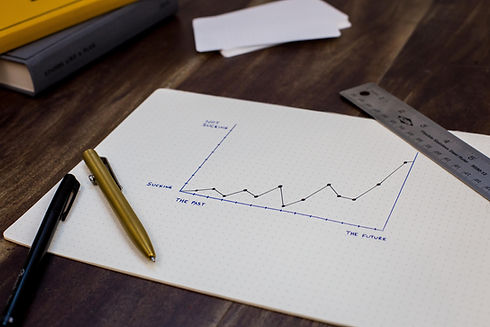How Did We Manage to Get through the COVID19 situation as a Business
- Jorge Diaz

- Jul 13, 2020
- 4 min read
If you own a business, there are no chances you didn't feel the impact of the COVID19 situation. It was and still is brutal. Unemployment, both in Canada and the U.S., was close to 15% while hundreds of thousands of small, mid and big businesses were shaking. Like most of these, we made it through, but it resulted from the combined application of our effort and focus. Today, I want to talk about what we did.
Hit the Brakes
We were scared, as everyone was, but we had to hit the brakes. It is like a survival instinct for entrepreneurs that gets to your guts, and you hear that little voice that says: "Save what you built."
Yes, the #1 priority was to keep the business afloat. I wrote a pretty extensive article about how did I manage to set up LeaseCosts during the late days of March, where I go into more detail. We had no idea what upcoming weeks were going to look like, so we just went ahead and focus on the essential things:
Measurement: If LC was steering into a collision course, I needed to know it. And the same applies if we were, indeed, heading towards safe waters. There is nothing more required than raw truth when stakes are that high. We went after key performance indicators to ensure things were up to date with every detail. KPIs plus the money in the bank, debt, website traffic, liabilities, human resources and time management. Anything that could take us closer to a "waste of resources" situation was immediately turned off.
Non-vitals: Yeah, we had to hit the brakes hard here. Switch off marketing budgets, tools we use every month, subscriptions and even go on a minimal time with most of our staff. You can find more details on the list I did of non-essentials.
Laying Off Myself: This was though, but probably the first straight decision. If I had to get a job to help my business make it through, I wasn't going to have a second thought about it. That was the first thing that came to my mind, and it was the first thing I did.
As soon as I started looking for opportunities, I got a part-time at an agency I used to work a few years ago and that I love. It was awesome sharing three months with them again, BTW. And working at my company was, once again, a "side hustle."
As a side note: With probably one of the best timing ever, I received my Fix This Next copy after five months during the pandemic crisis. I'll be talking about it soon, but definitely the kind of book you need to read in these situations.
But we made it. Dealerships started to open again across Canada in early May, and with all the new safety measures in place, the automotive business was back still on tracks. With 90% of revenue vanished, but again on roads.
Debt Payment was a Priority
The debt was the first item we targeted. Cutting down on interest rate expenses became one of our key priorities to avoid negative cash flow, so we had to rethink our conventional approach:
Our business finances operate under the Profit First (PF) system using a line of credit. I detail in this article how it is specifically done, but basically, we assume a debt expense to have a way better-organized money management process. So, the first thing we did internally was to:
Pay off all debt with cash reserves originally intended for Taxes, R&D and development projects.
Funnel all future revenue towards debt directly. We set up an internal bypass to cover expenses directly, right before doing the Profit First percentage allocations. PF was temporarily "cancelled" and, although an ideal 1% should have made it work under this situation, I promise I'll consider it if we ever face a situation like this again :)
Prioritize loan expenses to continue reducing debt and the installment's interest rates of current company assets. We didn't want to generate any additional interest rate expense.
Through this, we were able to liquidate most of our debt and bring the D/E ratio to almost 0. The business was essentially floating, and no heavyweight was risking it to sink away.
Rolling Back Changes
Well, without getting too much into detail, things have somehow settled by now July 2020. There seems to be light at the end of the tunnel for most businesses, but there are still many more out there that had to close or that will take longer to recover, but I hope you all make it through.
On our side, we have been gradually started again to get traction and to roll back most of the changes we did. We began by setting up the Profit First system again, focus more on delivering value to our customers, ad expenses, and we have hope the market gets traction back still. Not as the NASDAQ is behaving these days, but kind of similar to November-December 2019 volumes.
Ironically, not too far from today, I'll be doing a "post-Morten" of how did the entire rollback process went, but as of now, we are on track to make it.
Thanks for staying up to date!







Comments